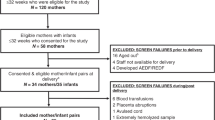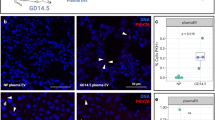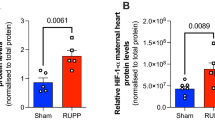Abstract
ABSTRACT: The present study compares the transplacen-tal transport of L-[l-13C]serine and L-[l-13C]leucine in sheep. An in vivo preparation using twin gestations was set up such that the arterial circulation to one uterine horn, including its placenta and fetus, was infused with tracer serine and leucine while the umbilical circulations of both fetuses were sampled. Uterine and umbilical blood flows were measured in each horn. Plasma serine enrichments were 14.6 ± 2.7% and 4.3 ± 1.6% in the uterine veins draining the experimental and control horns, respectively. Fetal plasma leucine enrichments in the umbilical veins were 50 and 55% of the uterine venous enrichments in the control and experimental fetuses, respectively. By contrast, during 280 min of infusion, there was no detectable serine enrichment in either fetal circulation. However, significant plasma glycine enrichment was present in the fetal circulation of the experimental horn and venous glycine enrichments in the experimental horn were significantly greater than arterial glycine enrichments for both the umbilical (p < 0.02) and uterine (p < 0.001) circulations. We conclude that under conditions in which leucine transport is easily demonstrable there is no significant transplacental transport of maternal serine and that maternal plasma serine is used within the uteroplacental tissues for producing glycine, some of which is delivered into the fetal circulation.
Similar content being viewed by others
Log in or create a free account to read this content
Gain free access to this article, as well as selected content from this journal and more on nature.com
or
Author information
Authors and Affiliations
Rights and permissions
About this article
Cite this article
Moores, R., Th. Rietberg, C., Battaglia, F. et al. Metabolism and Transport of Maternal Serine by the Ovine Placenta: Glycine Production and Absence of Serine Transport into the Fetus. Pediatr Res 33, 590–594 (1993). https://doi.org/10.1203/00006450-199306000-00012
Received:
Accepted:
Issue date:
DOI: https://doi.org/10.1203/00006450-199306000-00012



